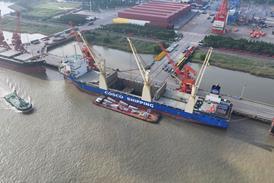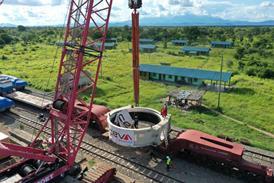Last year, DSV delivered a 950-tonne oil distilling component from Kuantan, Malaysia, to Balikpapan in Indonesia on behalf of Hyundai Engineering as part of a refinery expansion project.

The Indonesian government is boosting its refining capabilities at five exiting sites under its refinery development master plan (RDMP). For the Balikpapan project, DSV was tasked with handling the main fractionator column, which is used for the extraction of various products from crude oil.
“It is rare to see a component as heavy as the one we were asked to transport for Hyundai Engineering,” said Brian Kim, director of Asia-Pacific projects at DSV. “For this reason, the main challenge of this assignment was to find a suitable vessel that had the necessary lifting capacity and was big enough to stow this massive cargo. Furthermore, it had to be able to accommodate the tidal condition when being loaded and discharged at the ports.
“In order to make this shipment possible, we were in close contact with the DSV global chartering department, who are often a crucial support to us whenever we need to transport complex cargo. They were able to help us find a suitable vessel, equipped with two units of 900-tonne [capacity] cranes on board, that could tandem lift the main fractionator column. Once the vessel was secured, our transport engineers in projects could then work out the detailed lifting plan.”
In addition to the unusual weight of the main fractionator column, another challenge was that the cargo needed to be delivered within one month from signing the contract. This timing coincided with the festival season of Hari Raya Aidilfitri (Eid al-Fitr), during which many government agencies in Malaysia and Indonesia were closed for almost a week. This left the projects team with only three weeks to plan the shipment, acquire the necessary permits and prepare the shipping manual and method statement.
Six days after the main fractionator column was loaded onboard the vessel in the port of Kuantan, Malaysia, it was discharged at its destination in Balikpapan, Indonesia, after which it was successfully put to use as part of the RDMP Balikpapan project.
















